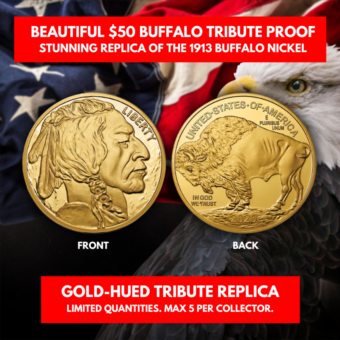
Gold Stocks vs Physical Gold: Investment Comparison
Every day more people realize that investing in gold is a fantastic idea. Gold is one of the most valuable resources on earth and is deeply ingrained in the history of every country in the world. There is no element with more power to affect deep change than gold, which is why it has been the subject of many a war or heist. Holding gold has long been an effective way to store wealth, display power, and gain protection from financial instability.
Buying gold is an excellent way to diversify your investment portfolio, and many investors find that precious metals make a great addition to any secret stash. However, there are a number of different ways you can choose to invest in gold, and not all of them hold the same benefits. From mining stocks to ETFs, to solid gold bars; options for investors are more varied than any other point in history. It used to be that if you wanted to get involved in the gold trade, you’d catch a train to California and go prospecting for metal. The choices for gold investment nowadays are much broader, so we’ll take you through each option.
What Are Gold Stocks?
Gold stocks, also called paper gold, cover any form of investment that doesn’t include physical precious metal. Like any other type of stock or investment, a gold stock entails giving money to a company to either mine or own gold on your behalf. It works in the same way as any other publicly-traded company; you buy the shares and benefit or suffer depending on the outcome. Investing in gold through paper is very different from buying bullion; many factors might come into your decision between the two.

Gold is typically seen as a “safe haven” asset in times of uncertainty because it is less volatile than other investments, like stocks.
Different Types of Gold Stocks
Any type of gold investment that is not physical comes under the umbrella of gold stocks, but these options are not limited to the stock market. In fact, there are numerous different ways in which you can invest in gold on paper. The right choice for one investor is not necessarily the right choice for all, so it’s important to know the differences between each option. Your personal investment goals, as well as your existing portfolio, have a huge impact on which gold investment is right for you. Next, we’re going to explain in detail the different types of gold stocks.
Gold Certificates
While not technically a stock, gold certificates are one of the most straightforward ways to invest in gold through the market. They allow you to achieve direct exposure to gold without physically owning it, and are probably the closest option for owning bullion. Gold certificates are pieces of paper issued by private companies that own gold. They essentially signify that you own a certain amount of gold, without having it in your possession.
There are two types of gold certificate, the most common of which is unallocated. If you buy an unallocated gold certificate, the company must back their promise that they have enough gold for every paper. Allocated gold certificates are more expensive, but they signify a specific piece or mass of physical gold which is yours. There’s no real advantage to buying allocated gold other than the additional peace of mind, but in that case, you shouldn’t be buying from an untrustworthy source.
The main setback of gold certificates is that they are only as reliable as the issuing company. Should the institution you decide to invest with go bankrupt, the certificate becomes worthless. The only object which links you to your investment is issued by a company that no longer exists, therefore your gold is lost. The main advantage of gold certificates over other gold stocks is easy liquidation; selling off this investment is very straightforward.
Futures Contracts
Futures contracts are another way to indirectly own gold, but this investment option is far more complicated than most alternatives. A futures contract is an agreement between an investor and a gold company to exchange a specific amount of gold for a certain price on a certain date. The value of the contract will fluctuate with the spot price of gold. Futures contracts are generally traded on exchanges, meaning you’ll need to speak to a broker to get involved.
Futures contracts are often bought with only a small fraction of the total cost, meaning investors may only need to pay 20% of the agreed price for example. This creates leverage which increases your gains, but also your losses. Because futures contracts have a specified end date, they’re a much less flexible investment. This option is time-consuming and highly complex, even experienced investors struggle with futures contracts. This high-risk way to invest in gold is not recommended for beginners.
Gold Mining Stocks
One way to buy into the gold industry without purchasing physical gold is to invest in gold mining companies. By buying shares in publicly-traded mining stock, you benefit from the company's revenue, profit, and growth. Gold mining stocks are the same as any other shared investment and are not linked in value to the current spot price of gold. Mining stocks offer an alternative to owning gold (whether you hold it or not) by instead allowing you to profit from the industry itself.
There are more than 300 publicly-traded gold mining companies worldwide, with values that can exceed $10 billion. Unlike the price of gold, which is steady and reliable, gold stocks can fluctuate in price all the time. Investors are subject to miner’s strikes, less-than-expected yields, natural disasters, on top of all the business-related issues which can arise with any stock or share. Gold mining stocks can be advantageous to diversify your portfolio, as gold mines also produce other precious metals. However, if your focus is purely gold then mining stocks are not the right choice.
Mutual Funds
Another similar option that offers an alternative to direct gold exposure is mutual funds. Mutual funds essentially allow you to invest in miners rather than mines, offering a more diverse investment with less work involved. If you choose to invest in a mining company, there’s a lot of research and comparisons to make. Mutual funds allow you to enjoy the same benefits without doing any work, essentially buying into someone else’s investment.
Like gold mining stocks, mutual funds usually cover more than just one precious metal. This might be a disadvantage if you prefer to focus on gold. Another downside to mutual funds is higher fees than other investments. Additionally, the responsibility of a mutual fund falls on the shoulders of the manager, meaning you have to trust another person with your money. If you’d prefer to have more control over your own gold investment, mutual funds are not the best option.
Streaming and Royalty Companies
Streaming and royalty companies provide miners with up-front cash in exchange for the right to buy gold and other precious metals from specific mines at reduced prices in the future. These companies avoid many of the risks and complications that come with running a mine (or investing in one) by essentially getting paid in gold. If you buy shares in a streaming and royalty company, you benefit from a diversified portfolio and contractually-obligated low prices which give you larger margins. You also get direct exposure to the changing gold price.
Stock in streaming and royalty companies are one of the best all-around gold investment choices. However, they don’t completely avoid the downsides of gold mines. If a gold mine doesn’t produce gold, there’s nothing for the streaming company to collect, no matter how many other issues were avoided. In addition, just like mining stocks and mutual funds, streaming stocks are not limited to gold and can include other precious metals and commodities such as gas and oil. This represents an edge as a general investment, as it allows for profitability even if the price of gold is falling.
Gold ETFs
Gold Exchange-Traded funds are probably the biggest rival investment to physical gold. Investing in a gold ETF means paying a company to purchase gold on your behalf. This is the most direct exposure to gold possible without buying the physical metal. ETFs are actually assets backed by gold, they mimic the changing spot price of the precious metal. Exchange-traded funds are traded like shares over a stock exchange.
This means you’ll pay a commission each time you buy or sell an ETF, although some brokerages are now offering commission-free online trading for certain ETFs. If you’re an active trader and will want to regularly move around shares in ETFs, the costs of commissions can quickly add up. However, the fact remains that ETFs are one of the most convenient ways to invest in gold. You get a liquid asset which is directly linked to gold coins, bars, and bullion, without the downsides of physical gold.
Advantages of Investing in Gold Stocks
One of the primary reasons that investors turn away from physical gold is the lack of potential growth. Gold is one of the most steady and reliable assets you can buy, but it’s unlikely to make you a lot of money. The reasons for owning physical gold are usually more to do with wealth protection than wealth gain, so the correct choice is highly dependent on your personal goals. If you want to make a significant amount of money, it’s not possible to do so with physical gold. Gold stocks, particularly mining stocks, mutual funds, and streaming and royalty companies, have a significant potential to increase in value.
Investing in gold stocks is much more convenient than physical gold. Transactions happen instantly, meaning the asset belongs to your name the moment money changes hands. Solid gold needs to be transported to your home or another secure location before it can be considered yours, and then it needs to be stored. With gold stocks, you never need to worry about the physical location of your gold because there’s no specific metal assigned to you. The final major advantage to paper gold is that you don’t need to insure it, there’s no risk of theft. Physical gold can be taken from your possession, leaving you with absolutely nothing.
Disadvantages of Investing in Gold Stocks
The disadvantages of gold stocks reflect the advantages of holding physical gold. Since paper gold is an investment in a company rather than a commodity, it’s subject to all sorts of change. A stock market crash or economic downturn can reduce the value of your investment to nothing since there’s no safeguard of physical gold in place. You cannot use stocks or shares as currency in an emergency, which is a huge benefit of owning physical gold.
The risks involved in gold investment are magnified when you choose paper. Since gold stocks are dependent on more than just the spot price of gold, they fluctuate more and are much less reliable. Your investment depends on so many different factors of success, whereas solid gold can only rise in value. Physical gold tends to benefit when the stock market suffers, but the same cannot be said of gold stocks. Gold is considered a safe haven investment because it offers so much protection and security, but no gold stock can offer the same benefits.
Investing in Physical Gold
There are several ways that you can buy physical gold, but only one is an effective investment. Gold jewelry and old gold coins have value above their gold content, so the price of these assets doesn’t always reflect their value. From an investment perspective, the only way to buy gold is through bullion. Gold bullion can be in the form of coins or bars, and it’s priced directly from the gold spot price. Physical gold is most often bought from reputable bullion dealers so you don’t have to worry about quality or gold content.
The American Gold Eagle is the most popular bullion coin in the world, meaning it can be traded as easily as gold ETFs. There are numerous reasons to buy gold, and you can read about the many advantages in our article. Sufficing to say, having physical gold in your possession is more reliable than paper gold. There are no papers, no middlemen, and no outside factors to consider. The only additional hurdle is the fact that you need to store your investment yourself.
Gold Stocks vs Physical Gold: What to Consider
We can clearly see that a range of options is available to any investor considering gold. Outside of physical gold ownership, gold certificates and gold ETFs offer the most direct relationship with the spot price of gold. This makes them a steadier investment, less likely to make any major gain or loss. On the other hand, mutual funds, mining stocks, and streaming and royalty companies group gold with a range of other investments. While they don’t offer direct profit from gold, these options make a more balanced portfolio and have more potential for gains. However, they also suffer the whims of gold miners, company CEOs, natural disasters, and other unforeseeable events.
Buying and Premiums
Premiums are the money you pay above the cost of an asset. When buying any sort of gold stock, you can expect to lose a small percentage with each transaction. On the other hand, physical gold premiums are paid to the bullion dealer upon purchase, plus any shipping and handling costs. As well as considering the cost of making the initial investment, consider the convenience of buying physical gold vs gold stocks. Buying gold stocks can be done from anywhere, over the phone, or on the internet. Additionally, the asset belongs to you straight away, without any waiting time for shipping. However, much more research is needed before making a gold stock investment, whereas all you need to do for physical gold is to find a reputable dealer.
Selling
Selling gold stocks is generally easier than selling physical gold, as the asset is more liquid by nature. The majority of non-physical gold investments can be sold off in a matter of minutes, whereas if you own physical gold then you have to make a physical sale. There are shipping costs and risks to consider, but if you have popular bullion then selling should still be easy. Should the global economy collapse, you can use physical gold as currency to buy anything you need. Paper gold, and any form of gold stock investment, is impossible to sell in the event of a complete financial crash.
Retirement
Gold can form a part of your IRA, especially gold mining shares and ETFs. If you want physical gold in your IRA, there are additional hoops to jump through. Gold bullion can only be a part of your retirement if you have a self-directed IRA and buy gold of at least 99.5% purity. Additionally, you aren’t allowed to store your gold IRA at home and must pay for an approved third-party storage facility. If you’re investing in gold for retirement purposes, the best decision depends on your budget. Physical gold IRA’s carry additional fees which ETFs avoid.

The first gold coins date back to 700-650 B.C.
Performance in Recession
In any sort of recession, physical gold has the best store of value. If the NYSE were to crash, any gold stock could become worthless. Conversely, the spot price of gold tends to rise in periods of economic uncertainty. If you’re planning for the inevitable and want your investment portfolio to perform well, physical gold is the obvious choice. There is no other asset that can offer such security in times of crisis, should paper currency fail.
Conclusion:
The main difference between gold stocks and physical gold is the degree of separation between you and the asset. Popular gold ETFs like GLD and GDX offers low-commission exposure to the gold market without buying physical gold, a great choice if you have no options for storage. Other gold share options including mutual funds and mining shares offer the opportunity to profit from more than just gold, but they also risk more losses.
At the end of the day, the safest and smartest investment is always to own physical gold. There are disadvantages to this method as with every other option, but the benefits will always ring true. After all, there’s a reason that central banks and the federal reserve stockpile physical gold and not shares; this metal backs the U.S. Dollar, showing how much more reliable it is than paper currency. The privacy, reliability, and security of investing in gold bullion will always make it the best addition to your portfolio.











